Equity and Inclusion in Autism Research: Breaking down barriers to participation
As an undergraduate I worked weekly with a young boy diagnosed with autism, doing my best to implement the therapy protocols I had learned from his school therapist in his home environment. He communicated through the push and pulls of my hands, his often hard-to-interpret vocal utterances, and on one or two occasions, a surprise sentence that would burst from his mouth. But otherwise, he struggled to show me what he wanted and needed, and his frustrations were often expressed through physical aggression to himself or others. As I moved through medical school and graduate school, I often thought about this boy and his family, and what their life was like as he had grown into an adult. Now, as a developmental behavioral pediatrician I have the privilege of working with many families in similar circumstances, and it is frustrating because some twenty years after I finished undergrad, the therapies for autis tic children with limited communication are – unfortunately – approximately the same.
tic children with limited communication are – unfortunately – approximately the same.
As a developmental cognitive neuroscientist and pediatrician, the opportunity to better understand communication delays faced by many autistic children sits squarely on my shoulders. While fields inside and outside of medicine have been transformed by the availability of data, ours has remained remarkably stagnant, as much art as science at times. This isn’t always bad – to be sure, human behavior, parenting, schooling, and interaction with diverse communities is a messy world with numerous variables, nearly impossible to isolate. But surely, we can do better. Yet, there is a dearth of research in this area, especially when it comes to those most challenged by these issues.
Frankly, as I reflect on my own experience collecting EEG data in young children with autism and intellectual disabilities, it’s not surprising. Participating in research is no small feat: it involves days off from both school and work (sometimes for both parents), travel to a city either near or far (often with children who don’t travel well), and hours in a research lab with friendly-but-unfamiliar faces, equipment, and protocols. Families who do participate are heroic, and do it all for a minimal stipend and perhaps reimbursement of costs. But too many families, whose contributions to science would be incredibly valuable, don’t have the luxury of making these sacrifices. And so our work goes on, often with small numbers of participants, resulting in long research cycles and ultimately an undersized impact.
As we move forward, as researchers we need to be innovative and develop new methods for quality research despite these constraints. In our lab we work hard to prepare for each individual participant so they have a successful research experience and we can collect high quality and accurate data. But data collected in the lab is biased toward those families who can endure the cost of a research visit, and our lab-based EEG and behavioral assessment data capture only a snapshot in a child’s development trajectory. In a time where many of us have wrist watches that track our heart rate, steps, and sleep, and AI models are becoming increasingly powerful with every day that passes, we need to think creatively about how we can collect rich and valuable longitudinal data outside of the standard lab visit. Are there opportunities to partner with therapy providers or schools who already monitor skills and progress? How can we modify cognitive and language assessments to be captured remotely and more frequently in the home? For my EEG research, could miniature, wireless EEG devices be used like new patch based cardiac EKG monitors – sent to the home, applied by the patient, and sent back to researchers a week later?
While technology can play a partial role in advancing data collection, research budgets need to better consider the sacrifices being asked of the families who possess some of the most extensive needs in our communities, and more adequately reimburse the true cost of participation. I’m confident there are many discoveries that are currently just beyond our reach. By stepping outside of our standard approaches to data collection, we have the opportunity to engage more broadly and deeply with patients and get ever closer to putting those discoveries to work for our patients and families.
Carol Wilkinson M.D. Ph.D. is a Developmental Behavioral Pediatrician in the Division of Developmental Medicine at Boston Children’s Hospital and a researcher in the Labs of Cognitive Neuroscience.



